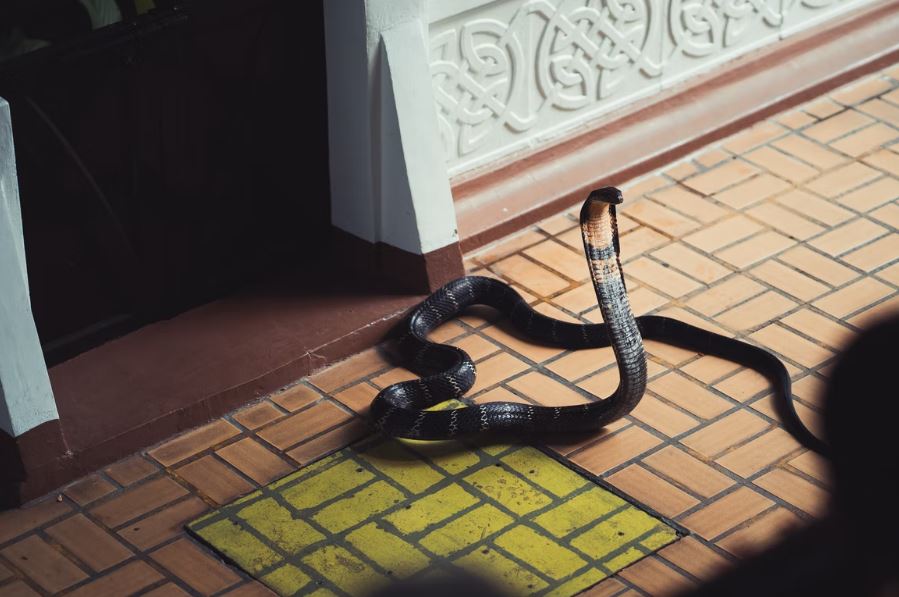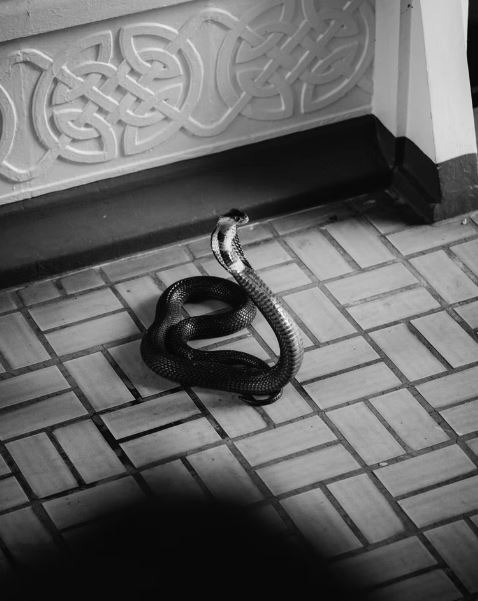It may not come as a surprise to learn that Thailand has risen to the position of the fourth most popular adventure destination in the world. With more than 10% of the world’s animal species and a diverse landscape renowned for its distinctive scenery, it’s really not hard to understand why adventure-seeking tourists flock to Thailand year after year. Thailand has something for every animal and nature lover, no matter what they are looking for. What you may not know, however, is that the snake is the most common animal you’ll probably encounter while in Thailand.
Most Dangerous Snakes in Thailand
1. Burmese Python
The Burmese Python, also known as the Python bivittatus bivittatus, typically lives in rural areas near trees and long grass, as well as on the outskirts of mountains and hills. They occasionally occur in Bangkok’s inner city areas, but this is less common, and they are more frequently observed at night than during the day. The Burmese Python can lay and incubate up to 100 eggs at once, just like all other pythons can. These eggs will hatch about two months later, and the Burmese Python, which can grow to be up to seven meters long and enjoys eating warm-blooded mammals, will begin to develop. In fact, it has been reported that they can tolerate animals as large as a German shepherd.
All things considered, the Burmese python is a fairly calm snake, and incidents of human bites are pretty rare. However, given that they can grow to a maximum length of 7 meters, their sheer size by itself can be dangerous.
2. Reticulatus Python
The Malayoython reticulatus, also known as the Reticulatus Python, can be found all over Thailand and is frequently spotted in Bangkok’s urban areas. They are known for their long-distance swimming, but are typically spotted at night and close to the water. Although a Reticulatus Python is known to bite at even the slightest disturbance and can be fairly aggressive, its venom isn’t particularly dangerous. However, given that many of them can grow to be up to 4 meters long, their size can prove to be dangerous.
3. Oriental Whip Snakes
The Oriental Whip snake, which is officially known as Ahaetulla prasina, is typically all-green in color and can be found in Thailand’s agricultural areas’ trees and forests. The Oriental Whip snake typically stays on the outer branches where they can more easily eat birds, frogs, and lizards. They lie in distinctive loose loops both when awake and when asleep. Although it can bite and is venomous, the oriental whip snake is not thought to be dangerous. If it does bite, it will massage its venom into the wound for at least 15 minutes before anything happens, giving you plenty of time to flee.
4. Golden Tree Snake
The Golden Tree Snake can be found all over Thailand, including in homes, gardens, and forests in addition to inner-city areas of Pattaya and Bangkok. The Golden Tree snake, also called Chrysopelea ornate ornatissima, is a snake that lives wherever there are geckos, lizards, and rodents because they love to eat them. They are known for their speed and capacity to scale walls, and this may be related to their diet. They are most active during the day. Even though the Chrysopelea family of snakes is poisonous, if one bit a person, the venom wouldn’t cause much of a reaction.
5. Copperhead Racer
The Copperhead Racer, or Coelognatus radiates, is a swift snake that can quickly flee if it senses danger, as its name suggests. The Copperhead Racer, which can grow to a height of about 2 meters, prefers to stay on the ground and is typically most active during the day. It is typically found in wooded areas as well as in villages and towns throughout Thailand. The Copperhead Racer typically forms a double S and begins to snap, or they may choose to play dead, if they do start to sense any danger and are unable to flee. Being in danger from a Copperhead Racer is unfounded because they are not venomous and therefore pose no threat to humans.
6. Laotian Wolk Snake
The maximum length of the Laotian Wolf snake, which is a very thin snake, is about 50 centimeters. The Laotian Wolf snake, also called Lycodon laoensis, is black with yellow stripes and is most frequently seen in rural areas and in hilly or mountainous terrain. Although it is a small, aggressive snake that is still capable of biting, short man syndrome mostly makes it harmless. However, because of its resemblance to the Banded Krait snake’s yellow and black stripes, it can be mistaken for one fairly easily. Be careful as this snake has incredibly deadly venom.
7. Indochinese Rat Snake
The Indochinese Rat snake (Ptyas korros), which can grow to a length of just over a meter, is typically seen during the daytime in lowland areas throughout all of Thailand. Although they are not dangerous to people, they can be quick to jump and bite if threatened or cornered. They are typically swift snakes, though, and would ultimately choose to flee.
8. Checkered Keelback
The Checkered Keelback, formally known as Xenochrophis piscator, is also referred to as a fish snake because it frequently inhabits areas near bodies of water. The Checkered Keelback, which can grow up to 2 meters long, prefers to be active during the day and has been known to travel considerable distances when looking for dinner. Due to the Checkered Keelback’s tendency to flatten out its neck and stand upright before biting when agitated, it is frequently mistaken for a Cobra. If they do bite, it won’t endanger people.
9. Monocled Cobra
All over Thailand, as well as in some areas of Nepal, southern China, and other places, one can reasonably expect to see the Monocled Cobra (Naja kaouthia). Although it prefers to stay on the ground, it is equally adept at swimming and climbing, and it can be found all over the country in a variety of settings, including cities, villages, plantations, and rice fields, both day and night. One of the most dangerous snakes to encounter in Thailand is the monocled cobra. They frequently exceed 2 meters in length, but they are still remarkably swift and agile, and their venom is extremely potent and deadly to humans. Avoid the Monocled Cobra at all costs.
10. Malayan Pit Viper
The Malayan Pit Viper, scientific name Calloselasma rhodostoma, is typically found near dry leaves, old wood, or stones. The Malayan Pit Viper, which can grow up to a meter long and resembles these surroundings in color, is most active at night and only emerges occasionally. The Malayan Pit Viper is one of Thailand’s deadliest venomous snakes, ranking alongside the Monocled Cobra, and if it senses danger, it can move extremely quickly before biting.


